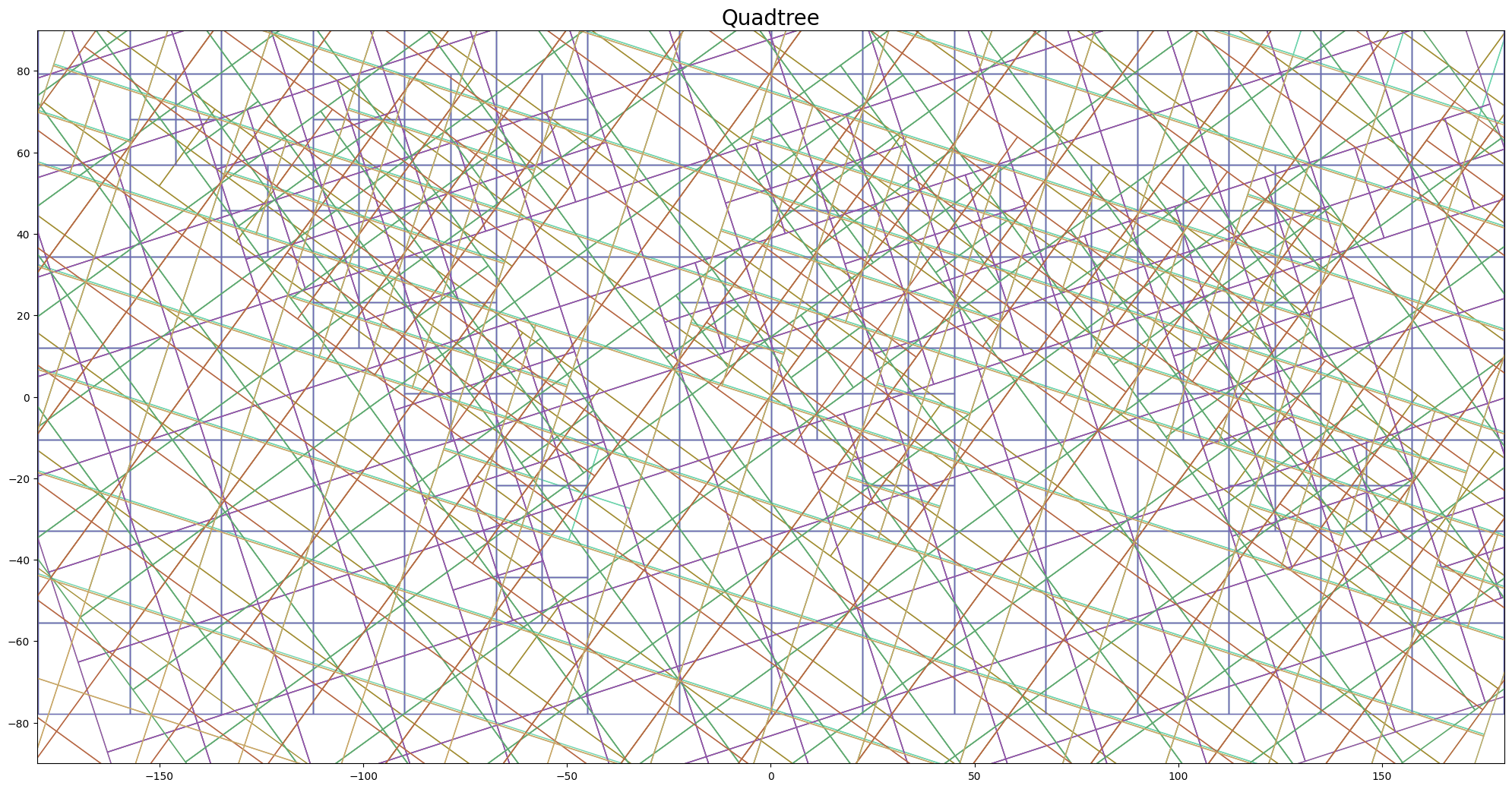stemflow 

A Python Package for Adaptive Spatio-Temporal Exploratory Model (AdaSTEM)
Documentation 
Installation 
Or using conda:
Brief introduction 
stemflow is a toolkit for Adaptive Spatio-Temporal Exploratory Model (AdaSTEM [1, 2]) in Python. Typical usage is daily abundance estimation using eBird citizen science data (survey data).
stemflow adopts "split-apply-combine" philosophy. It
- Splits input data using Quadtree or Sphere Quadtree.
- Trains each spatiotemporal split (called stixel) separately.
- Aggregates the ensemble to make the prediction.
The framework leverages the "adjacency" information of surroundings in space and time to model/predict the values of target spatiotemporal points. This framework ameliorates the long-distance/long-range prediction problem [3], and has a good spatiotemporal smoothing effect.
For more information, please see an introduction to stemflow and learning curve analysis
Model and data 
Main functionality of stemflow |
Supported indexing | Supported tasks |
|---|---|---|
 Spatiotemporal modeling & prediction Spatiotemporal modeling & prediction |
 User-defined 2D spatial indexing (CRS) User-defined 2D spatial indexing (CRS) |
 Binary classification task Binary classification task |
 Calculate overall feature importances Calculate overall feature importances |
 3D spherical indexing 3D spherical indexing |
 Regression task Regression task |
 Plot spatiotemporal dynamics Plot spatiotemporal dynamics |
 User-defined temporal indexing User-defined temporal indexing |
 Hurdle task (two step regression – classify then regress the non-zero part) Hurdle task (two step regression – classify then regress the non-zero part) |
 Spatial-only modeling Spatial-only modeling |
||
| For details see AdaSTEM Demo | For details and tips see Tips for spatiotemporal indexing | For details and tips see Tips for different tasks |
| Supported data types | Supported base models |
|---|---|
 Both continuous and categorical features (prefer one-hot encoding) Both continuous and categorical features (prefer one-hot encoding) |
 sklearn style sklearn style BaseEstimator classes (you can make your own base model), for example here |
 Both static (e.g., yearly mean temperature) and dynamic features (e.g., daily temperature) Both static (e.g., yearly mean temperature) and dynamic features (e.g., daily temperature) |
 sklearn style Maxent model. Example here. sklearn style Maxent model. Example here. |
| For details and tips see Tips for data types | For details see Base model choices |
Usage 
Use Hurdle model as the base model of AdaSTEMRegressor:
from stemflow.model.AdaSTEM import AdaSTEM, AdaSTEMClassifier, AdaSTEMRegressor
from stemflow.model.Hurdle import Hurdle
from xgboost import XGBClassifier, XGBRegressor
## "hurdle in Ada"
model = AdaSTEMRegressor(
base_model=Hurdle(
classifier=XGBClassifier(tree_method='hist',random_state=42, verbosity = 0, n_jobs=1),
regressor=XGBRegressor(tree_method='hist',random_state=42, verbosity = 0, n_jobs=1)
), # hurdel model for zero-inflated problem (e.g., count)
save_gridding_plot = True,
ensemble_fold=10, # data are modeled 10 times, each time with jitter and rotation in Quadtree algo
min_ensemble_required=7, # Only points covered by > 7 ensembles will be predicted
grid_len_upper_threshold=25, # force splitting if the grid length exceeds 25
grid_len_lower_threshold=5, # stop splitting if the grid length fall short 5
temporal_start=1, # The next 4 params define the temporal sliding window
temporal_end=366,
temporal_step=20, # The window takes steps of 20 DOY (see AdaSTEM demo for details)
temporal_bin_interval=50, # Each window will contain data of 50 DOY
points_lower_threshold=50, # Only stixels with more than 50 samples are trained and used for prediction
Spatio1='longitude', # The next three params define the name of
Spatio2='latitude', # spatial coordinates shown in the dataframe
Temporal1='DOY',
use_temporal_to_train=True, # In each stixel, whether 'DOY' should be a predictor
njobs=1
)
Fitting and prediction methods follow the style of sklearn BaseEstimator class:
## fit
model = model.fit(X_train.reset_index(drop=True), y_train)
## predict
pred = model.predict(X_test)
pred = np.where(pred<0, 0, pred)
eval_metrics = AdaSTEM.eval_STEM_res('hurdle',y_test, pred_mean)
print(eval_metrics)
Where the pred is the mean of the predicted values across ensembles.
See AdaSTEM demo for further functionality.
See Optimizing stixel size for why and how you should tune the important gridding parameters.
Plot QuadTree ensembles 

Here, each color shows an ensemble generated during model fitting. In each of the 10 ensembles, regions (in terms of space and time) with more training samples were gridded into finer resolution, while the sparse one remained coarse. Prediction results were aggregated across the ensembles (that is, in this example, data were modeled 10 times).
If you use SphereAdaSTEM module, the gridding plot is a plotly generated interactive object by default:

See SphereAdaSTEM demo and Interactive spherical gridding plot.
Example of visualization 
Daily Abundance Map of Barn Swallow

See section AdaSTEM demo for how to generate this GIF.
Citation
Chen et al., (2024). stemflow: A Python Package for Adaptive Spatio-Temporal Exploratory Model. Journal of Open Source Software, 9(94), 6158, https://doi.org/10.21105/joss.06158
@article{Chen2024,
doi = {10.21105/joss.06158},
url = {https://doi.org/10.21105/joss.06158},
year = {2024},
publisher = {The Open Journal},
volume = {9},
number = {94},
pages = {6158},
author = {Yangkang Chen and Zhongru Gu and Xiangjiang Zhan},
title = {stemflow: A Python Package for Adaptive Spatio-Temporal Exploratory Model},
journal = {Journal of Open Source Software}
}
Contribute to stemflow 
We welcome pull requests. Contributors should follow contributor guidelines.
Application-level cooperation is also welcomed. We recognized that stemflow may consume large computational resources especially as data volume boosts in the future. We always welcome research collaboration of all kinds.
References:




